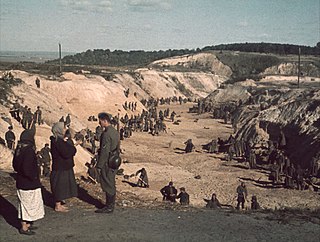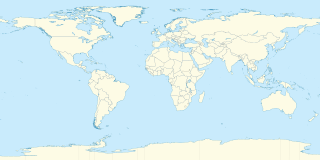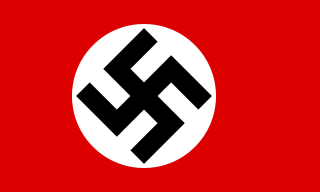 W
WBabi Yar is a ravine in the Ukrainian capital Kyiv and a site of massacres carried out by Nazi Germany's forces during its campaign against the Soviet Union in World War II. The first and best documented of the massacres took place on 29–30 September 1941, killing approximately 33,771 Jews. The decision to kill all the Jews in Kyiv was made by the military governor Generalmajor Kurt Eberhard, the Police Commander for Army Group South, SS-Obergruppenführer Friedrich Jeckeln, and the Einsatzgruppe C Commander Otto Rasch. Sonderkommando 4a troops, along with the aid of the SD and SS Police Battalions with the Ukrainian Auxiliary Police backed by the Wehrmacht, carried out the orders.
 W
WThe 6th Army was a field army unit of the German Wehrmacht during World War II (1939–1945). It was widely remembered for being the most highly decorated German army unit until its destruction by the Red Army at the Battle of Stalingrad in the winter of 1942–1943. It also acquired a reputation for the war crimes that it committed under the command of Field Marshal Walther von Reichenau during Operation Barbarossa.
 W
WBabi Yar Holocaust Memorial Center is an educational institution that documents, explains and commemorates the Babi Yar shootings of September 1941 and aims to broaden and sustain the memory of the Holocaust in Eastern Europe, taking into account geopolitical changes during the 20th century. In 2016 the discussion of the Memorial project began. The Memorial Center is planned to be created in Kyiv, Ukraine, by 2023.
 W
WBabi Yar is a ravine in the Ukrainian capital Kyiv and a site of massacres carried out by Nazi Germany's forces during its campaign against the Soviet Union in World War II. The first and best documented of the massacres took place on 29–30 September 1941, killing approximately 33,771 Jews. The decision to kill all the Jews in Kyiv was made by the military governor Generalmajor Kurt Eberhard, the Police Commander for Army Group South, SS-Obergruppenführer Friedrich Jeckeln, and the Einsatzgruppe C Commander Otto Rasch. Sonderkommando 4a troops, along with the aid of the SD and SS Police Battalions with the Ukrainian Auxiliary Police backed by the Wehrmacht, carried out the orders.
 W
WBabi Yar, a ravine near Kyiv, was the scene of possibly the largest shooting massacre during the Holocaust. After the war, commemoration efforts encountered serious difficulty because of the policy of the Soviet Union. After the dissolution of the Soviet Union, a number of memorials have been erected. The events also formed a part of literature.
 W
WPaul Blobel was a German SS commander and convicted war criminal who had a prominent role in the Holocaust. He was the key figure in organising and executing the Babi Yar massacre of 1941 and in June 1942, Blobel was put in charge of Sonderaktion 1005, with the task of destroying the evidence of Nazi atrocities in Eastern Europe. After the war, he was convicted at the Einsatzgruppen Trial and executed.
 W
WKurt Eberhard was a German Nazi officer. He rose to the rank of Brigadeführer of the SS and in the German army. During World War II Eberhard was given the command over the occupied city of Kiev in Ukraine. He was involved in planning and supervising the Babi Yar massacres during which over 33,771 people were murdered. He was captured by US authorities after the end of World War II, in November 1945, and kept in captivity in Stuttgart. He committed suicide on September 8, 1947.
 W
WFriedrich Jeckeln was a German SS commander during the Nazi era. He served as a Higher SS and Police Leader in the occupied Soviet Union during World War II. Jeckeln was the commander of one of the largest collection of Einsatzgruppen death squads and was personally responsible for ordering and organizing the deaths of over 100,000 Jews, Romani, and others designated by the Nazis as "undesirables". After the end of World War II in Europe, Jeckeln was convicted of war crimes by a Soviet military tribunal in Riga and executed in 1946.
 W
WDina (Vera) Mironovna Pronicheva was a Soviet Jewish actress at the Kiev Puppet Theatre, and a survivor of the September 29–30, 1941 Babi Yar massacre in Kiev. Initially she tore up her identity card and claimed that she was not Jewish and was only seeing someone off, but the Germans decided to kill her anyway so that she would not be a witness. She was then ordered to march to the ravine, to be forced to undress and then be shot. Jumping before being shot and falling on other bodies, she played dead in a pile of corpses. She held perfectly still while the Nazis continued to shoot the wounded or gasping victims. Although the SS had covered the mass grave with earth, she eventually managed to climb through the soil and escape. Since it was dark, she had to avoid the flashlights of the Nazis finishing off the remaining victims still alive, wounded and gasping in the grave. She was one of the very few survivors of the massacre. At least 28 other survivors are known. However, she was the only survivor to testify afterwards at the January 24, 1946 Kiev-based war-crimes trial. She later related her horrifying story to writer Anatoly Kuznetsov, who incorporated it into his novel Babi Yar, published in Yunost in 1966.
 W
WEmil Otto Rasch was a high-ranking German Nazi official and Holocaust perpetrator, who commanded Einsatzgruppe C in northern and central Ukraine until October 1941. After World War II, Rasch was indicted for war crimes at the Einsatzgruppen trial, but the case was discontinued for medical reasons in 1948. He died in 1948 while in custody.
 W
WWalter Karl Ernst August von Reichenau was a field marshal in the Wehrmacht of Nazi Germany during World War II. Reichenau commanded the 6th Army, during the invasions of Belgium and France. During Operation Barbarossa, the invasion of the Soviet Union, he continued to command the 6th Army as part of Army Group South as it captured Ukraine and advanced deep into Russia.
 W
WDuring World War II, Reichskommissariat Ukraine was the civilian occupation regime (Reichskommissariat) of much of Nazi German-occupied Ukraine. It was governed by the Reich Ministry for the Occupied Eastern Territories headed by Alfred Rosenberg. Between September 1941 and August 1944, the Reichskommissariat was administered by Erich Koch as the Reichskommissar. The administration's tasks included the pacification of the region and the exploitation, for German benefit, of its resources and people. Adolf Hitler issued a Führer Decree defining the administration of the newly occupied Eastern territories on 17 July 1941.